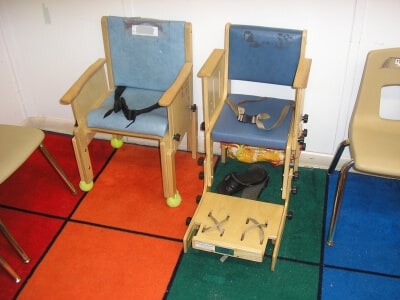

In a previous article, I called for a reduction in the use of seclusion and restraint in public schools by focusing on positive behavior interventions. In circumstances when restraint is used, parents need to be aware of the information they should expect to receive from their child’s school. I will address seclusion in a future article.
Physical restraint
Physical restraint – also referred to as a “physical hold” or “therapeutic hold” — means using the hands or body to prevent a student from moving freely.
Schools are permitted to use physical restraint with students, but only in certain circumstances. Restraint cannot be used solely for discipline or punishment. School staff can physically restrain a student if it is written and described in the student’s Individualized Education Program (IEP), Behavior Intervention Plan (BIP), or 504 plan. School staff also can physically restrain a student where the use of restraint is reasonably necessary to:
- Obtain possession of a weapon or dangerous object;
- Maintain order; stop/prevent a fight;
- Prevent injury to the student/others;
- Escort a student safely to another place; or
- Prevent property destruction.
In advocating against the use of physical restraint, focus on whether the use of restraint was “reasonably necessary” in your child’s situation. It may be reasonably necessary to restrain a student to prevent property destruction and injury when the student is trying to punch his hand through a window. But what about when the student is breaking a pencil or tearing up a worksheet?
Mechanical restraint
A mechanical restraint means a device or material that a student cannot easily remove which prevents the student from moving freely. Examples of mechanical restraint include a seatbelt, a Rifton or other chair with straps or a tray, or handcuffs.
As with physical restraint, school staff cannot use mechanical restraint solely for discipline or punishment. Staff can never tie or tape down a student. Staff cannot use handcuffs on a student, but school resource officers can use handcuffs as part of their law enforcement duties.
Staff may use mechanical restraint to obtain possession of a weapon or dangerous object, or to prevent injury to the student or others. Staff also can use mechanical restraint to keep a student secure during transportation – meaning they can use seatbelts or other safety restraints.
Finally, staff can mechanically restrain a student when the device is properly used as assistive technology as described in the IEP, BIP or 504 plan, or as prescribed by a service provider. This is where we most often see the improper use of mechanical restraint. If a service provider (i.e. a doctor, physical therapist, or occupational therapist) prescribes the chair for a specific medical purpose, such as a student who cannot hold herself upright due to muscle weakness, the use of the chair would be appropriate and permissible. However, some school systems utilize Rifton chairs or similar chairs with belts, straps, or locking trays to “help the student focus” or “keep them in one place” to work. This is not considered assistive technology; this is a restraint for the convenience of staff that is not permitted in North Carolina.
Reporting to parents
The law requires school staff to notify you that they used physical restraint on your student only in cases where it resulted in observable physical injury to the student. Staff are required to notify you about the use of mechanical restraint only in cases where the use was not permitted by the law. The school must verbally notify you about the incident no later than the end of the following work day and must give you a written incident report within 30 calendar days. The report must describe the date, time, nature, and duration of the restraint; what led to the restraint; other interventions staff tried before using the restraint; any injuries to your student; and the identity of the staff person to contact if you have questions.
While not required, it is best practice for the school to always notify you when restraint is used. This is particularly important because staff may not recognize that they used a restraint that was not permitted and, therefore, are required to report it. You should advocate for your student’s IEP or BIP to include a requirement that staff document and notify you about any use of restraint. The documentation should include all the information listed above.


